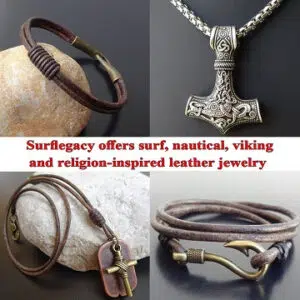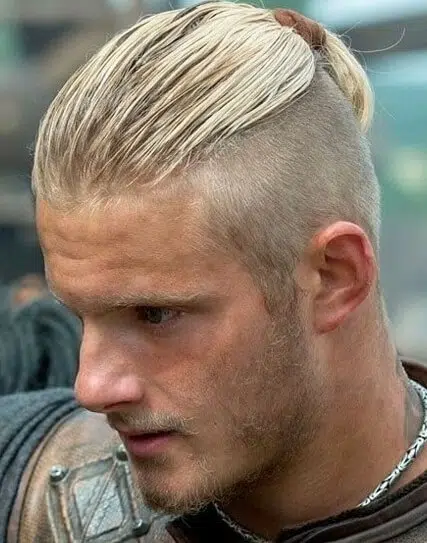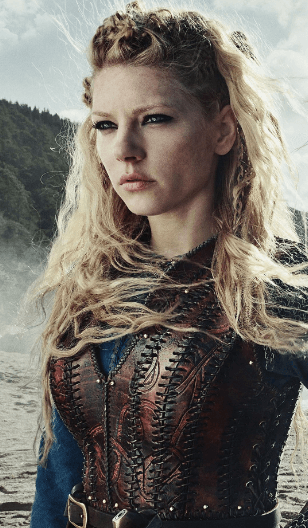If you’ve watched the TV series Vikings you can’t have missed the intricate Viking hair styles of the female protagonists and the long, flowing hair of the men. The long braids were a valuable aid against pests and to move nimbly even in the most critical situations. The Viking hair styles shown on screen are really fascinating.
Hair as a source of energy
The Vikings considered the world as a stage made of magic. They believed they were guided by arcane beings and opposed by evil spirits, often represented by blood, strongly imbued with symbolic value. So they thought that in hair and nails, as in all the protruding parts of the body, was hidden an inexhaustible source of energy.
The Nordic populations took care of their hair
The image of dirty and savage that is sometimes associated with the Vikings in popular culture, is a total distortion of reality…today we know that among the medieval peoples, the Norse were the most attentive to the cleanliness of their skin and hair. We know from depictions that the Vikings had well-groomed hair and beards. Men had long bangs and short hair at the back of their heads,” continues Kæmpe Henriksen. The beard could be long or short, but it was always well-groomed, with an almost perfect shave along the neck.
Vikings used to use a series of objects for personal hygiene such as combs, tweezers, razors or special “spoons” for the ears. In particular, in the archaeological excavations made in ancient Germanic settlements combs are among the most common objects found.
Contrary to popular belief washing one’s hands and hair regularly was the norm, lack of cleanliness was an unusual practice, reserved for those in mourning. In the poem Völuspá found in the Poetic Edda, it is said that Odin himself, king of the gods, did not wash his hair as a sign of mourning for the death of his son Baldr.
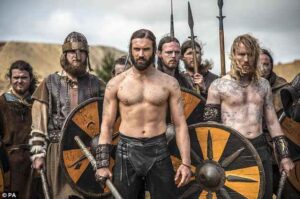
Viking hair styles for men
A very common practice was to dye not only the hair but also the beard with basic solutions with bleaching action. This technique was mentioned not only by Ahmad ibn Rustah, an important scholar of medieval populations, but before him, Pliny the Elder stated that the men of Germanic tribes were inclined to bleach their hair and beards.
Men’s hairstyles were very variable according to the area of origin. Some perhaps were more in use than others or dictated by a particular profession, usually, slaves wore their hair very short, and vice versa the middle class wore their hair up to the shoulders and a long beard.
While a warrior had to be careful to choose a cut that did not allow the opponent to make holds during combat. See also our guide on Viking Braids
The hairstyle of Biorn son of king Ragnar is an example of it. In fact it involves shaving off part of the head in order to prevent the enemy from grabbing the hair from behind in battle and probably for lice as well… This look was chosen for Bjorn as his character is about to face the reality of becoming a warrior, just like his father.” Affirms one of the Viking hairstylists from the TV series.
Ragnar’s hairstyle
” To stand out in the crowd, Ragnar’s hair is as unique as his character! I’ve designed a really sophisticated look to make him stand out from the rest. We try to make each character an individual not only to differentiate him, but to define or enhance his personality and how he fits into the plot”.
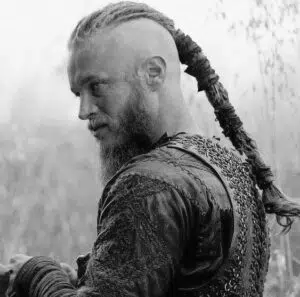
The intent has been achieved, Ragnar’s hairstyle is truly unique and on the net, you can even find tutorials to achieve it.
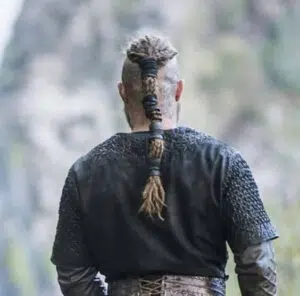
Viking hair styles for women
Women, unlike men, had to adopt criteria dictated by age or belonging to a certain civil status. Young girls could wear their hair loose and flowing but probably to be more comfortable they raised and braided above the head. Married women had it tied up and sometimes wrapped in a veil. It can be noticed how in the series “Vikings” for female hair is used a more articulated and elegant style.
Married women = hair tied up in braids or tails. In some villages, hair was covered with a veil or placed under a cap.
Women seeking husband = loose hair, at most two braids around the temples or a headband to hold it in place.
The Viking hair styles, had a very important role for both men and women.In fact, they were not a simple aesthetic affectation to make themselves more attractive, but were a distinctive feature of their social status.
It is assumed that the inhabitants of a Viking village were divided into three categories of belonging, namely:
Jarl = noble men and women. They were the members of important families.
Karl = free men and women. They were the majority and were in turn divided into farmers, warriors and farriers.
Thrall = slave men and women. They were from other populations.
The first difference between these three classes, for men, was the length of their hair and beards.
Jarl = hair as long as mid-back. During fights they were tied up so they would not be a disadvantage. The beard was long on the chin, but well outlined (tools permitting)
Karl = long hair not beyond the shoulders. During fights they were tied back to keep them from being a disadvantage. The beard was long, but well defined (tools permitting).
Thrall = short hair and no beard.
Also for ladies the difference between these three classes was the length of the hair.
Jarl = long hair even to the middle of the back.
Karl = long hair.
Thrall = short hair.
Are you a woman and would you like to have one of those Viking hair styles? In this case you can choose a warrior or a romantic Viking look. In the first case, shave your hair on the right or left side. Leave the length and give a touch of blonde color to the hair (do not forget that the Vikings have light color hair). You can show off the cut by leaving your hair loose or make a ponytail to highlight the shaved part. If you want a more romantic hairstyle, divide your hair into two strands and make a parting in between.Tie your hair and make two small braids with the tufts in front that you will then tie in the nape area with a small elastic. Leave the other hair loose.
Viking hair styles for men denote a strong and feisty character. To achieve it, however, you must first grow your hair at least up to the shoulders. When you have reached the right length, shave the sides and fix the central part (which will go from the forehead to the nape of the neck) with gel so as to leave the shaving uncovered. Alternatively, you can shave the hair at the nape and create a ponytail. Don’t forget the beard: let it grow long by joining it with the sideburns. You can also think of making small braids on the beard to give an even deeper Viking sense.
Viking Jewelry to complement your Viking hair style
Finding the ideal Viking Jewelry to complement your new Viking hair style can be challenging, especially if you lack inspiration or don’t know where to look. Surflegacy has you covered. We have a wide range of Viking items in various styles, shapes, colors, and materials, to accentuate your Viking Look.
Our pieces are crafted in Italy with care and style in mind, and reasonably priced, so you won’t have to break the bank to get one. Visit our store here and let us assist you on your fashion journey.
